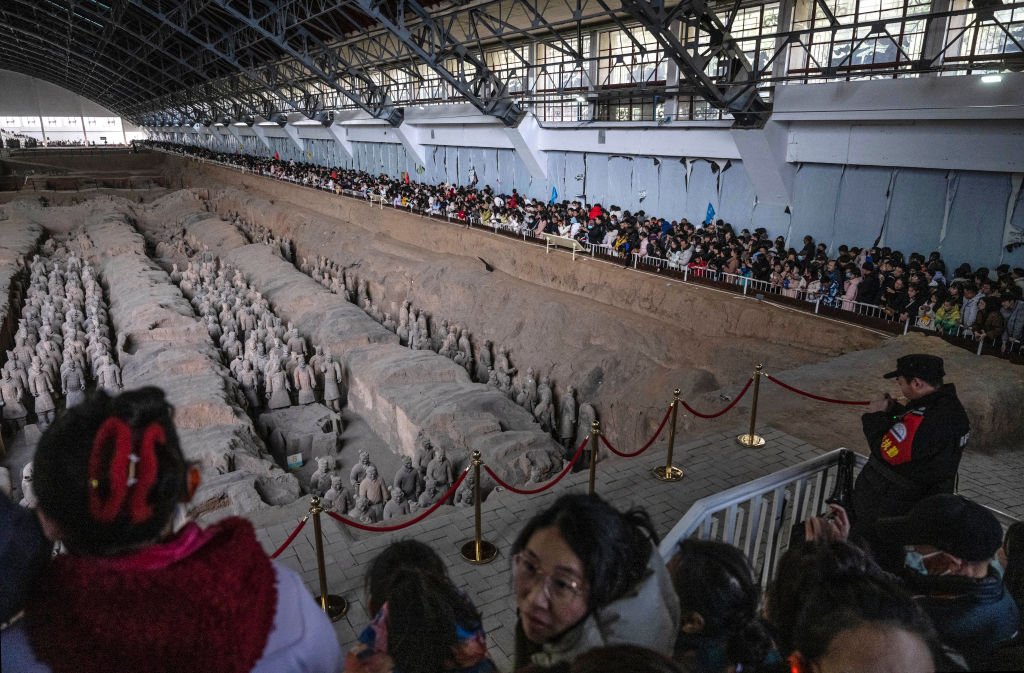A 30-year-old Chinese tourist damaged two ancient clay warriors from China’s terracotta army, local officials said on Saturday, according to Agence France Presse.
According to the statement, the tourist was visiting the Mausoleum of Qin Shi Huang in Xi’an, a city in western China that was the capital during several ancient dynasties, when he “climbed over the guardrail and the protective net and jumped” more than 15 feet into Pit No. 3 on Friday.
The man then “pushed and pulled” the clay warriors, leading to “varying degrees” of damage, before he was restrained by security, according to the statement.
Related Articles

Video footage was captured just moments after the incident, with the suspect lying on the ground among the collapsed warriors. Authorities said they believe the man suffers from metal illness, though the case is still currently under investigation.
Following the event, the display reportedly reopened on Saturday.
This is hardly the first controversy surrounding the famous statues. In 2023, a man accepted a plea deal after stealing a thumb from one of the terracotta warriors, many of which were on display at the Franklin Museum in Philadelphia at the time of the theft in 2017.
The Terracotta Army was created to protect Emperor Qin Shi Huang in the afterlife around 209 BCE. It is the only known collection of military sculptures produced en masse in the world. As the country’s first emperor, Qin Shi Huang unified China with an army of more than 500,000 men.
To construct the Terracotta Army and mausoleum, researchers believe it took 700,000 laborers a span of 30 to 40 years to complete. Since the army was first discovered by local farmers in 1974, achaeologists have found roughly 8,000 statues from the army, all of them constructed using exact measurements per their military ranks, with generals being taller than soldiers, standing at an average height of 5 feet 8 inches. The mausoleum has been an UNESCO World Heritage site since 1987.
In 2022, with excavations still ongoing, twenty warriors were newly found near the Chinese emperor’s secret tomb and added to the count.

